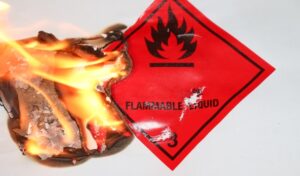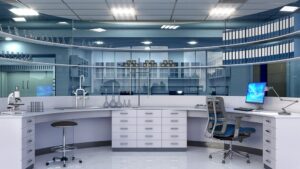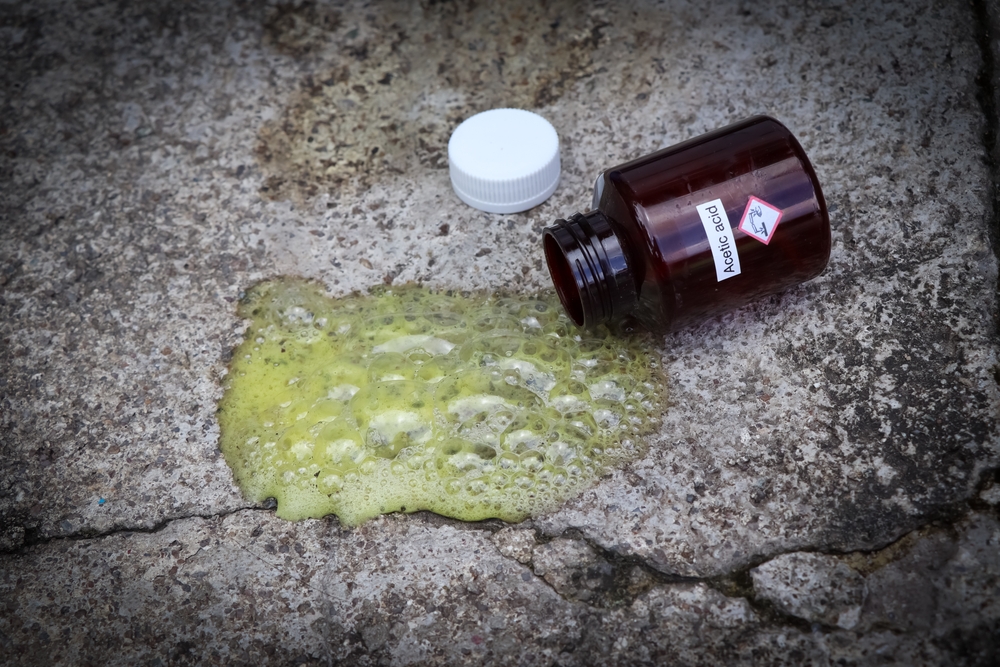
When designing a laboratory, flooring often takes a back seat to equipment and layout considerations. However, the right laboratory flooring is crucial to ensuring a safe, durable, and efficient workspace. Laboratory environments are subject to unique challenges, from chemical spills to high foot traffic, making flooring a critical element for long-term functionality and safety.
Selecting the best laboratory flooring requires a careful balance between durability and safety. Floors must be able to withstand daily wear and tear, chemical exposure, and potential hazards like slips or contamination.
In this article, we will explore the key factors to consider when choosing laboratory flooring, focusing on safety features and durability that can support various types of labs—from healthcare and pharmaceutical to industrial and research facilities.
Safety Considerations for Laboratory Flooring
In laboratory environments, safety is paramount. Whether it’s handling hazardous chemicals, working with sensitive biological materials, or managing complex equipment, the flooring must contribute to minimizing risks.
Choosing a floor that enhances safety is not just about accident prevention, but also about creating a workspace that meets industry regulations and ensures worker well-being. Below are the key safety features to prioritize when selecting laboratory flooring:
- Slip Resistance: Laboratories are often fast-paced environments where the risk of spills and high foot traffic is common. Slip-resistant flooring materials, such as textured vinyl or rubber, help reduce the likelihood of slips and falls, even when liquids or chemicals are present. Ensuring that the flooring meets specific slip-resistance ratings is essential to maintaining a safe workspace.
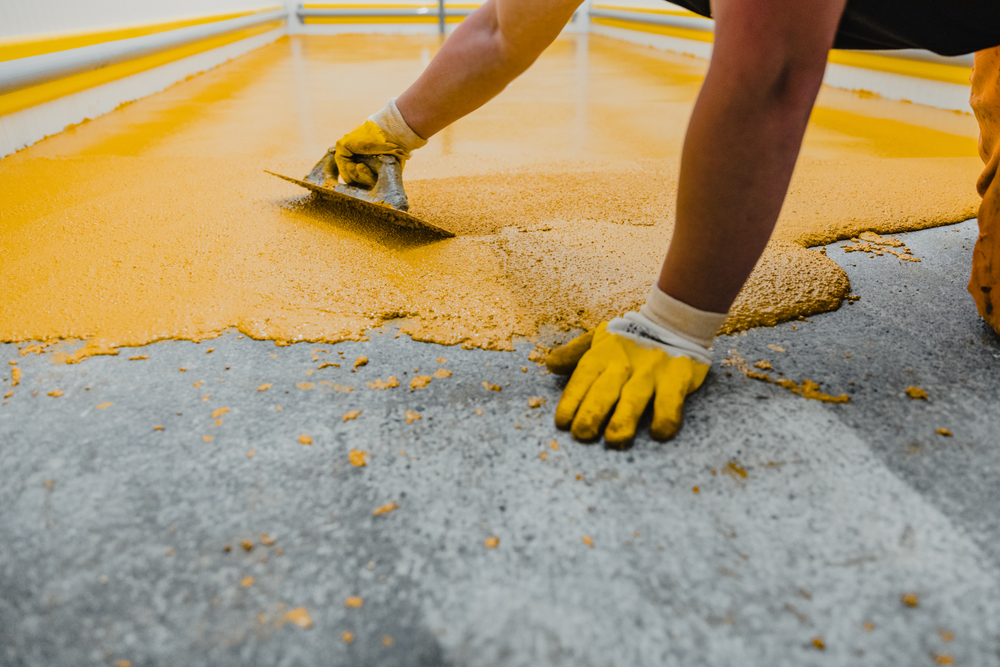
- Chemical Resistance: Laboratory flooring must withstand frequent exposure to chemicals, whether it’s acids, solvents, or other potentially hazardous substances. Flooring materials like epoxy, polyurethane, or specially treated vinyl are designed to resist damage from chemical spills, preventing long-term degradation and reducing the risk of accidents caused by flooring wear or chemical reactions with the surface.
- Fire Resistance: Certain labs, especially those in industrial and pharmaceutical settings, handle flammable materials. Fire-resistant laboratory flooring can act as an additional safeguard in case of a fire outbreak. Materials like ceramic tiles or specialized coatings applied to vinyl and epoxy flooring can reduce the spread of flames and help contain fires before they escalate.
- Cleanability: In any lab, hygiene is critical. Flooring that is easy to clean and maintain helps prevent the buildup of contaminants and hazardous materials. Smooth, seamless laboratory flooring like epoxy or polyurethane offers an ideal solution, minimizing cracks where dirt or chemicals can accumulate. This also simplifies routine disinfection and sterilization processes, ensuring a safe and sanitary environment.
- Biological Hazards: For labs working with biological agents, such as medical research facilities or biotech labs, antimicrobial flooring is an essential safety feature. Laboratory flooring with antimicrobial properties inhibits the growth of harmful bacteria, mold, and fungi, helping to control the spread of contamination. This is especially critical in labs where sterility is a top priority, as contaminated floors can lead to compromised results and health risks.
By focusing on these safety considerations, laboratory designers can create environments that are not only compliant with regulations, but also actively protect the people and processes inside the facility.
Durability Considerations for Laboratory Flooring
Laboratories are demanding environments where the flooring must endure constant stress while maintaining its functionality and appearance. Whether it’s heavy equipment, foot traffic, or exposure to harsh chemicals, durability is a top priority when selecting laboratory flooring.
A durable floor ensures long-term performance, reduces maintenance costs, and minimizes the risk of damage that could disrupt critical operations. Below are the key durability factors to consider:
- Wear and Tear Resistance: Laboratories experience continuous use, with technicians, researchers, and equipment moving across the floor daily. Wear and tear are inevitable, but selecting flooring materials that are resistant to scratches, abrasions, and scuffs is essential.
Epoxy and polyurethane laboratory flooring are excellent choices for high-traffic areas due to their long-lasting resilience. These materials maintain their appearance and integrity even after years of use, reducing the need for frequent repairs or replacements.
- Impact Resistance: Labs often house heavy machinery, equipment, and instruments that can be accidentally dropped or moved around. Flooring must be able to withstand significant impacts without cracking or denting.
Rubber, vinyl, and polyurethane floors are known for their impact resistance, cushioning the effects of dropped items and protecting both the floor and equipment from damage. This is especially important in labs where sensitive instruments are used, as the floor needs to absorb shock to prevent equipment damage.
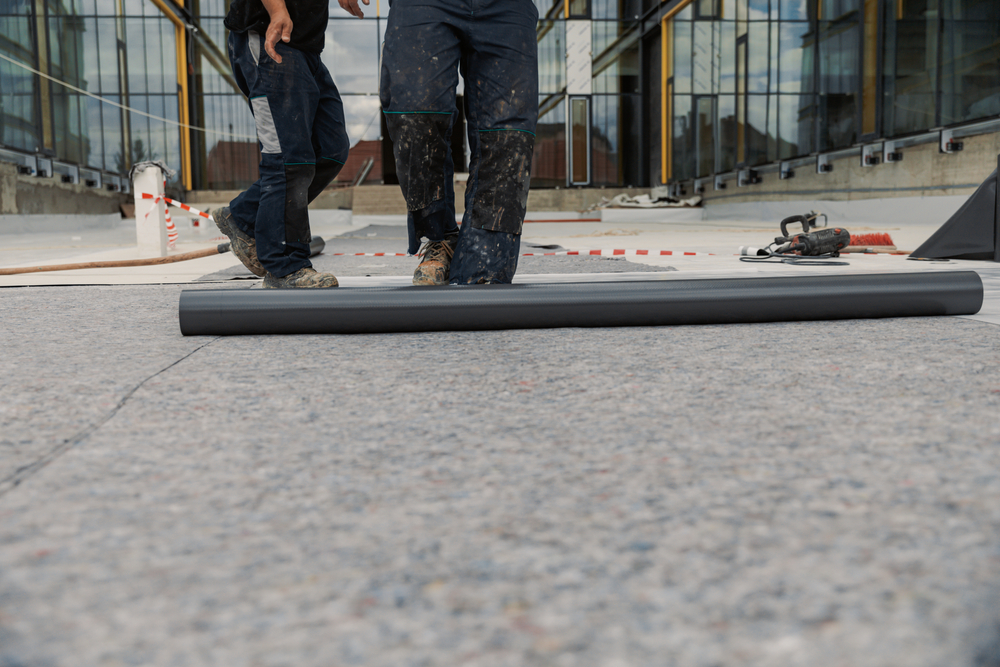
- Moisture Resistance: Moisture can cause significant damage to flooring, especially in laboratories dealing with liquids, humid environments, or water-based experiments. A moisture-resistant floor is crucial to prevent issues like warping, mold growth, and structural weakening.
Vinyl and epoxy laboratory flooring provide excellent moisture protection, ensuring that the lab floor remains intact and safe even in high-humidity or wet conditions.
- Thermal Shock Resistance: Laboratories often experience extreme temperature fluctuations, whether from experiments involving cryogenics or high-temperature equipment. Flooring that is not designed to handle rapid temperature changes can crack, warp, or become otherwise compromised.
Materials like polyurethane or epoxy are engineered to resist thermal shock, maintaining their structural integrity and performance even when subjected to sudden temperature shifts.
- Chemical Resistance: While chemical resistance is a critical safety feature, it also contributes to the floor’s durability. Floors exposed to frequent chemical spills must resist not only immediate damage but also long-term degradation. Without chemical-resistant properties, laboratory flooring can weaken over time, leading to cracks or surface erosion.
Epoxy, polyurethane, and certain vinyl floors offer robust protection against a wide range of chemicals, ensuring the floor remains strong and reliable even after repeated exposure.
By selecting flooring that meets these durability criteria, laboratory designers can ensure that the environment remains functional, cost-effective, and reliable for years to come, minimizing downtime and extending the floor’s lifespan.
Types of Laboratory Flooring Options
Selecting the right flooring material for a laboratory depends on the specific needs of the facility, including the type of work being done and the environment it operates in. Different materials offer various advantages in terms of safety, durability, and cost. Here are some of the most common and effective laboratory flooring options:
Epoxy Flooring
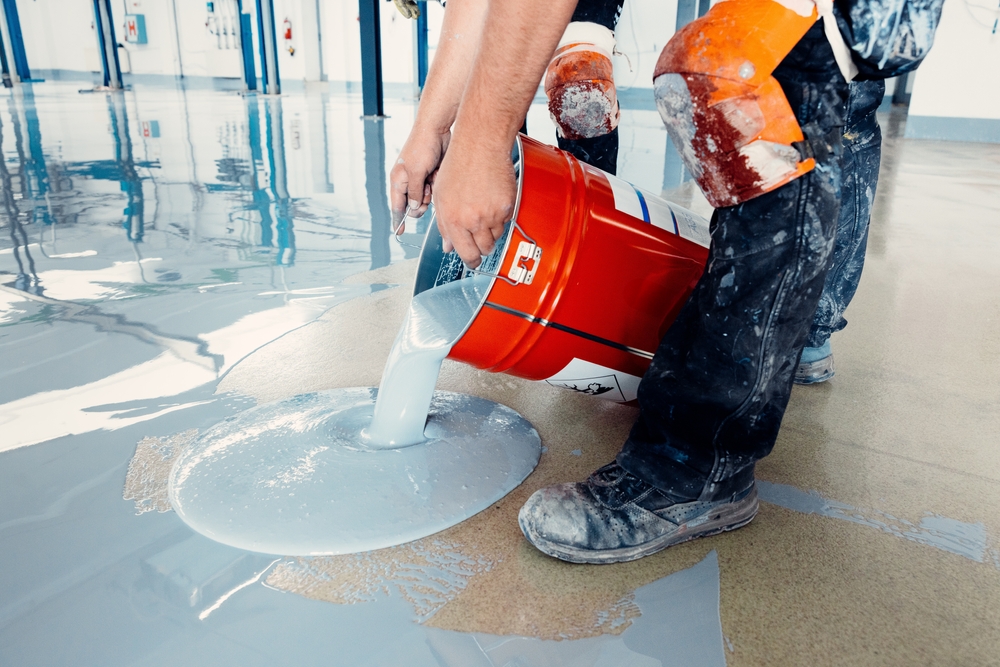
Epoxy is one of the most popular choices for laboratory flooring due to its high performance in both safety and durability. Made by applying layers of resin to create a seamless surface, epoxy floors are highly resistant to chemicals, spills, and stains.
They are easy to clean and disinfect, making them ideal for environments where hygiene is critical. Epoxy flooring also offers excellent slip resistance and can be customized with anti-slip additives, providing a safe working surface.
- Advantages: Chemical resistance, seamless surface, durability, customizable slip resistance.
- Best For: Pharmaceutical labs, medical labs, and industrial facilities handling harsh chemicals.
Vinyl Flooring
Vinyl is a versatile and affordable option that provides a good balance between safety, durability, and comfort. Its slip-resistant surface helps reduce the risk of falls, and it’s relatively easy to install and maintain.
Vinyl flooring is also moisture-resistant, which is crucial in laboratories where liquids are frequently used. Available in both sheet and tile formats, vinyl is ideal for covering large areas with minimal seams, reducing the chance of contaminants getting trapped.
- Advantages: Affordable, slip-resistant, moisture-resistant, easy to maintain.
- Best For: Healthcare labs, biotech facilities, and educational laboratories.
Rubber Flooring
Rubber flooring is known for its shock absorption and impact resistance, making it an excellent choice for labs that handle heavy equipment or fragile instruments. It provides a comfortable surface for standing and walking, which can help reduce fatigue for lab technicians.
Rubber is naturally slip-resistant and also offers a high degree of sound insulation, making it suitable for labs that need a quieter environment. Its resilience against chemicals and easy maintenance further enhance its appeal for laboratory settings.
- Advantages: Shock absorption, sound insulation, slip resistance, chemical resistance.
- Best For: Industrial labs, research facilities with heavy equipment, and spaces that prioritize noise reduction.
Polyurethane Flooring
Polyurethane laboratory flooring offers similar benefits to epoxy but with added flexibility. It is particularly known for its resistance to thermal shock, which makes it ideal for laboratories where temperature extremes are common.
Polyurethane is also softer underfoot compared to epoxy, providing additional comfort for workers who spend long hours standing. Its chemical resistance and antimicrobial properties make it a reliable choice for labs that require high levels of sanitation.
- Advantages: Thermal shock resistance, antimicrobial properties, comfort underfoot.
- Best For: Medical research labs, biotech labs, and facilities dealing with extreme temperatures.
Tile Flooring (Ceramic, Porcelain)
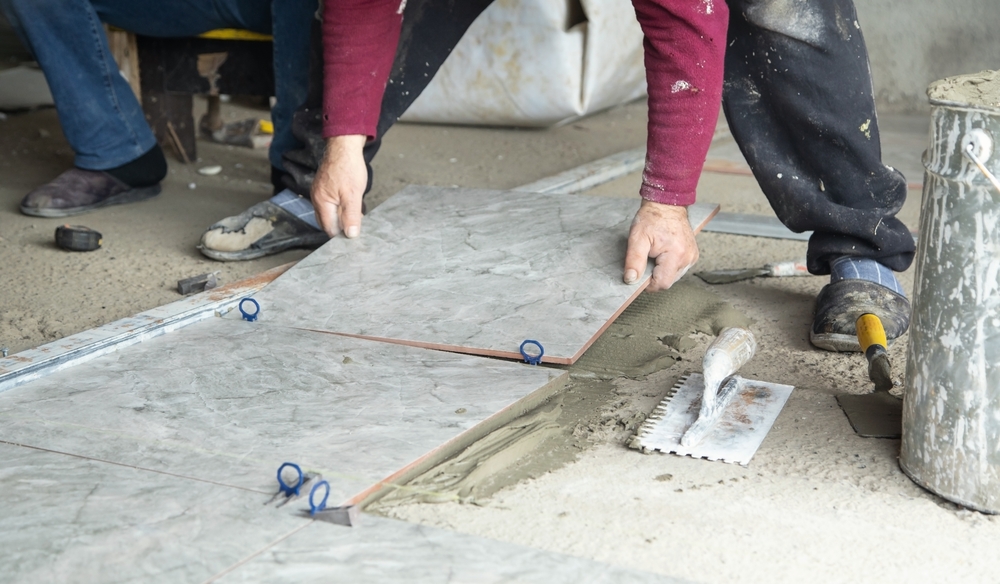
Tile flooring, particularly ceramic or porcelain, is a durable and long-lasting option for laboratories that need high resistance to wear, moisture, and chemicals. Tiles are easy to clean and maintain, making them a good choice for areas where hygiene is essential.
However, tile flooring may not provide the same level of slip resistance as other options, and grout lines can sometimes harbor bacteria if not properly sealed. Nevertheless, it is a cost-effective option for certain lab environments.
- Advantages: Durability, moisture resistance, easy maintenance.
- Best For: Cleanrooms, pharmaceutical labs, and chemical processing areas.
This variety of laboratory flooring options provides flexibility for different needs, ensuring that every lab can choose a solution that meets its unique safety, durability, and cost requirements.
Industry-Specific Flooring Requirements
Not all laboratories are the same, and their flooring needs can vary significantly depending on the type of work being conducted. Certain industries have specific safety, durability, and hygiene requirements that make selecting the right flooring material even more critical. Here are some industry-specific considerations to guide your flooring selection process:
Pharmaceutical Laboratories
Pharmaceutical labs require flooring that meets strict hygiene standards and stands up to rigorous chemical exposure. These labs often handle potent substances that can corrode standard flooring materials. Flooring in pharmaceutical settings must also be seamless to prevent the buildup of contaminants and ensure that the space can be sterilized regularly.
Epoxy and polyurethane floors, with their high chemical resistance and easy-to-clean surfaces, are ideal for such environments. Additionally, antimicrobial properties are crucial to prevent contamination and meet stringent regulatory standards.
- Key Requirements: Chemical resistance, antimicrobial properties, seamless surface for sterilization.
Biotech and Research Facilities
In biotech and research labs, the flooring must provide both protection and cleanliness. These facilities typically work with biological agents, making contamination control essential. Antimicrobial flooring, such as polyurethane or specially treated vinyl, is a smart choice to minimize the risk of biological hazards.
These labs also require flooring that can handle heavy equipment and resist impact, while maintaining high standards of sanitation. Seamless and easy-to-maintain floors are a must, ensuring that spills and biological agents don’t penetrate the surface.
- Key Requirements: Antimicrobial surfaces, impact resistance, chemical and biological hazard protection.
Medical and Healthcare Laboratories
Healthcare labs, including clinical and diagnostic settings, need flooring that enhances hygiene while offering comfort to staff who spend long hours on their feet. These labs require slip-resistant, easily disinfected flooring to maintain a sterile environment and prevent accidents.
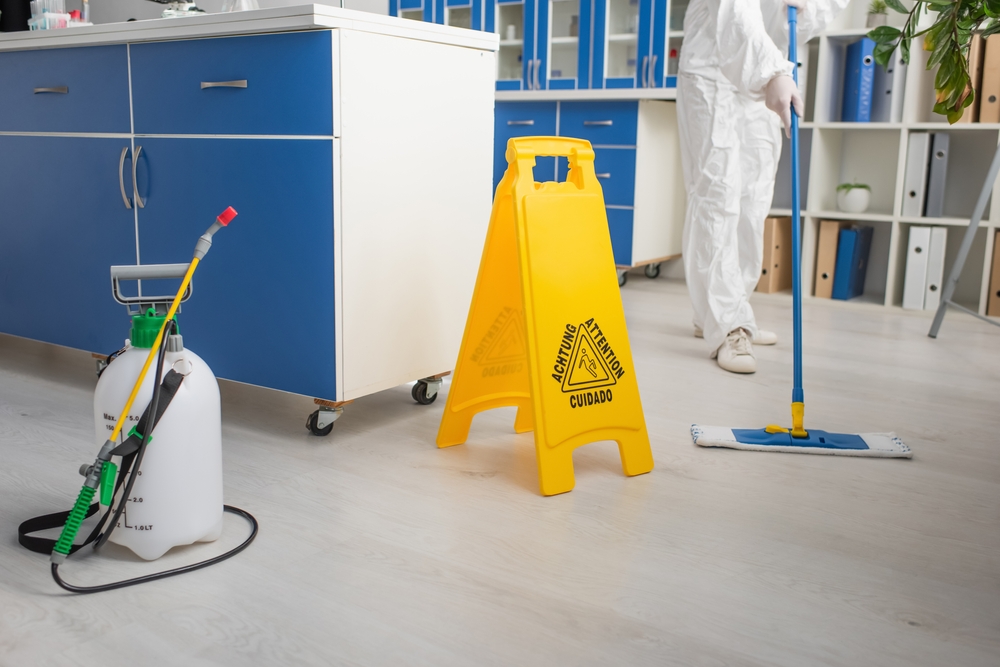
Rubber or vinyl flooring is a popular choice for these facilities because it combines durability with comfort, providing a surface that’s easy on both feet and maintenance staff. Additionally, antimicrobial flooring can reduce the risk of spreading infections.
- Key Requirements: Slip resistance, antimicrobial properties, comfort, and ease of cleaning.
Industrial and Chemical Laboratories
Industrial labs, such as those in chemical manufacturing or materials testing, demand heavy-duty flooring that can handle extreme conditions. These facilities often deal with large machinery, chemical spills, and abrasive substances, making it crucial to install floors that are both impact- and chemical-resistant.
Epoxy and polyurethane floors are excellent choices due to their superior strength and resistance to harsh chemicals. In these environments, fire resistance may also be a priority, depending on the nature of the work conducted.
- Key Requirements: Impact resistance, chemical resistance, fire resistance, durability under heavy machinery.
Cleanrooms
Cleanrooms, used in industries such as electronics, pharmaceuticals, and biotechnology, demand ultra-clean, contamination-free environments. The flooring must be non-porous, seamless, and resistant to particles that could compromise the cleanroom’s air quality.
Epoxy and certain types of vinyl flooring are typically used because of their ability to be thoroughly sealed and cleaned without introducing contaminants. Antistatic properties are also important in cleanrooms where sensitive electronic components are handled.
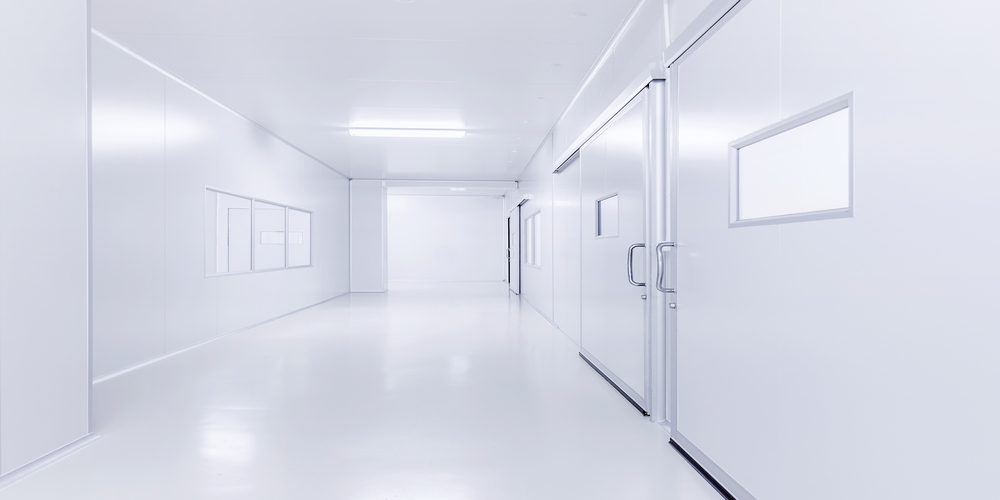
- Key Requirements: Seamless surface, particle resistance, antistatic properties, chemical resistance.
Choosing the right flooring for a laboratory requires understanding the unique challenges of each industry. Whether it’s the high standards of cleanliness in pharmaceutical labs or the need for impact resistance in industrial settings, tailoring the flooring solution to the specific needs of the facility ensures safety, durability, and regulatory compliance.
Cost vs. Performance
When choosing laboratory flooring, it’s essential to strike the right balance between cost and performance. While budget constraints are always a factor, investing in high-quality flooring can yield long-term savings by reducing maintenance costs, minimizing downtime, and extending the lifespan of the laboratory.
Understanding the trade-offs between initial costs and performance factors such as durability, safety, and ease of maintenance can help laboratory designers make informed decisions.
Initial Installation Costs
The upfront cost of laboratory flooring can vary significantly depending on the material and the complexity of installation.
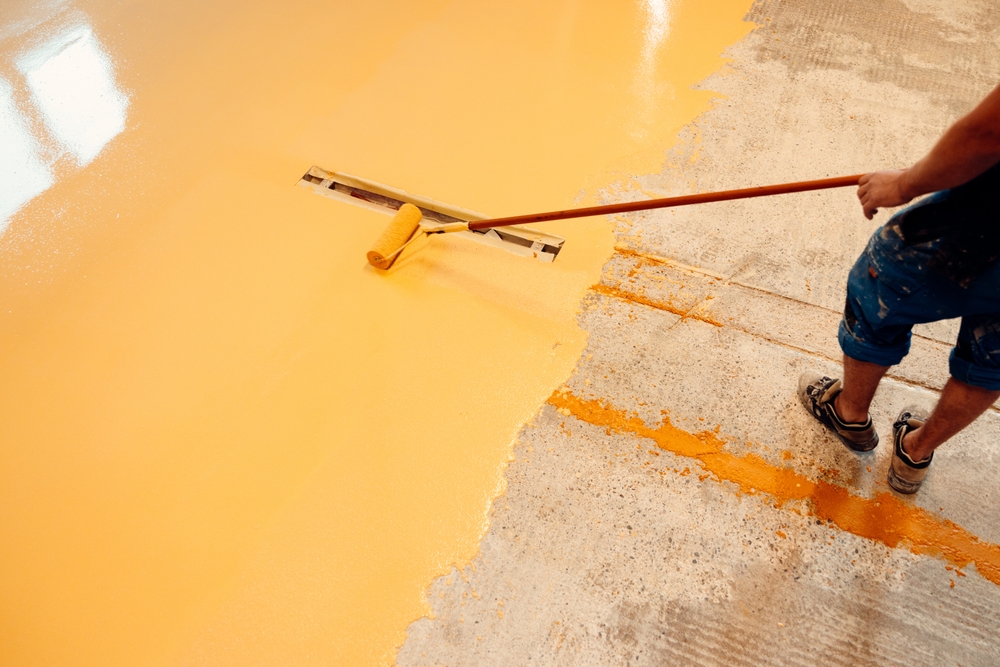
For example, materials like epoxy and polyurethane tend to have higher installation costs due to the specialized preparation and application processes required. On the other hand, vinyl and rubber flooring typically offer more affordable installation options, but may not provide the same level of long-term durability.
However, opting for a cheaper flooring material could lead to increased maintenance expenses and shorter replacement cycles, making it more costly eventually. It’s important to consider the specific demands of the lab environment and choose laboratory flooring that will meet immediate needs and withstand the test of time.
- High Initial Costs: Epoxy, polyurethane.
- Moderate to Low Initial Costs: Vinyl, rubber.
Maintenance and Durability
A key factor in the cost-performance equation is the durability of the laboratory flooring. Materials that are highly resistant to wear and tear, chemicals, and impact tend to have higher initial costs, but they offer significant long-term savings by reducing the need for frequent repairs or replacements.
For example, epoxy and polyurethane floors are known for their durability, lasting for decades with minimal upkeep, making them a cost-effective option over time. Vinyl and rubber, while initially more affordable, may require more frequent maintenance, particularly in high-traffic or chemically intensive environments.
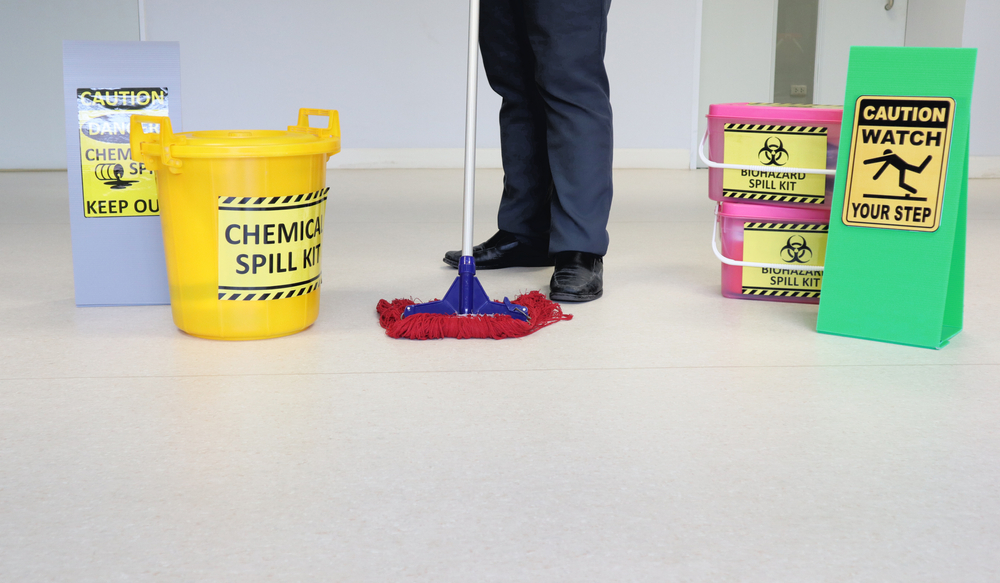
Additionally, floors that are easy to clean and maintain contribute to operational efficiency. Choosing a flooring material that supports quick, effective cleaning—like seamless epoxy or polyurethane—helps reduce labor and time spent on maintenance, which can be critical in fast-paced lab settings.
- Long-Term Cost Savings: Epoxy, polyurethane.
- Moderate Maintenance Costs: Vinyl, rubber.
Performance vs. Material Costs
The performance requirements of the laboratory should be carefully weighed against the cost of materials. In some cases, choosing a high-performance material, even if it comes with a higher price tag, is essential to ensure the safety and productivity of the lab.
For example, in labs dealing with hazardous chemicals, the cost of a more expensive, chemically resistant flooring material like epoxy or polyurethane is justified when compared to the potential costs of damage, accidents, or non-compliance with safety regulations.
Alternatively, for lower-intensity applications such as educational or general-purpose labs, vinyl or rubber flooring can provide sufficient durability and safety at a lower cost.
- High Performance: Necessary in chemical, pharmaceutical, and industrial labs where safety and durability are paramount.
- Moderate Performance: Suitable for educational, research, or less hazardous environments.
Long-Term Value
While high-performance materials like epoxy and polyurethane may come with steeper initial costs, their extended lifespan and minimal maintenance requirements often make them more cost-effective in the long run.
Conversely, lower-cost options might seem appealing at the outset but could require frequent replacements or costly repairs, negating the savings. Evaluating the expected lifespan of the flooring and the potential cost of replacement helps ensure that the best financial decision is made.
In the end, investing in high-quality flooring tailored to the lab’s specific needs is typically the most economical choice, delivering both performance and long-term value.
Balancing cost and performance ensures that laboratories function efficiently, safely, and within budget, offering both short- and long-term benefits.
Environmental and Sustainability Considerations
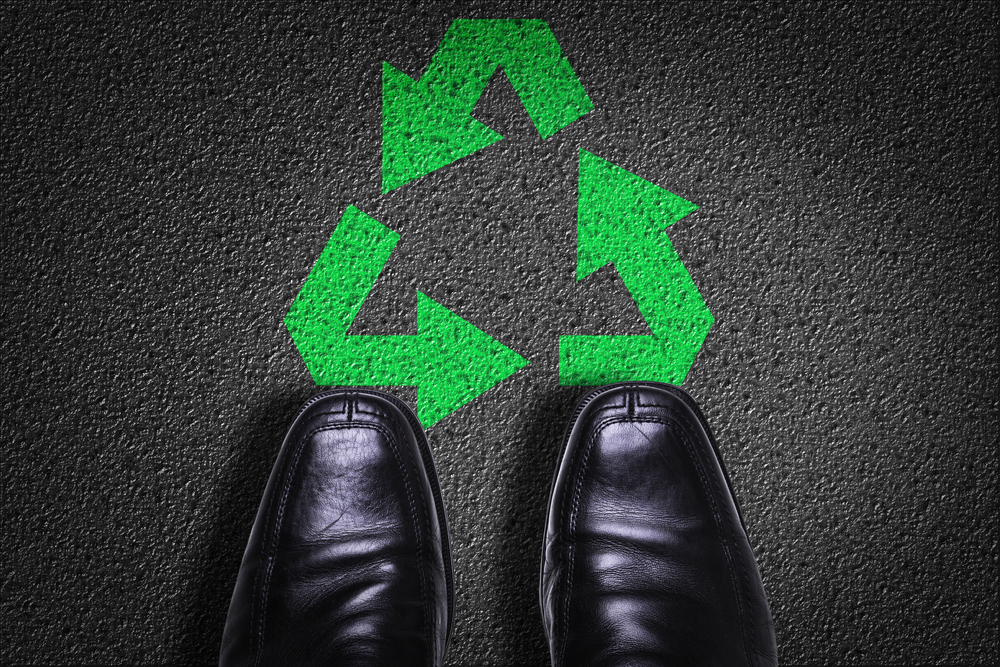
As industries increasingly prioritize environmental responsibility, the selection of laboratory flooring has evolved to incorporate sustainability into the decision-making process. Choosing eco-friendly flooring materials not only aligns with corporate social responsibility goals but also contributes to healthier indoor environments for laboratory personnel.
Here are some critical sustainability considerations to keep in mind when selecting laboratory flooring:
Sustainable Materials
The environmental impact of laboratory flooring materials can vary significantly based on their source and manufacturing processes. Opting for laboratory flooring made from renewable, recycled, or sustainably sourced materials helps reduce the overall carbon footprint of the laboratory.
For example, cork and bamboo are renewable resources that provide natural flooring options, while some vinyl and rubber products are now available in recycled formulations, offering both performance and eco-friendliness.
- Examples of Sustainable Options: Cork, bamboo, recycled vinyl, and rubber.
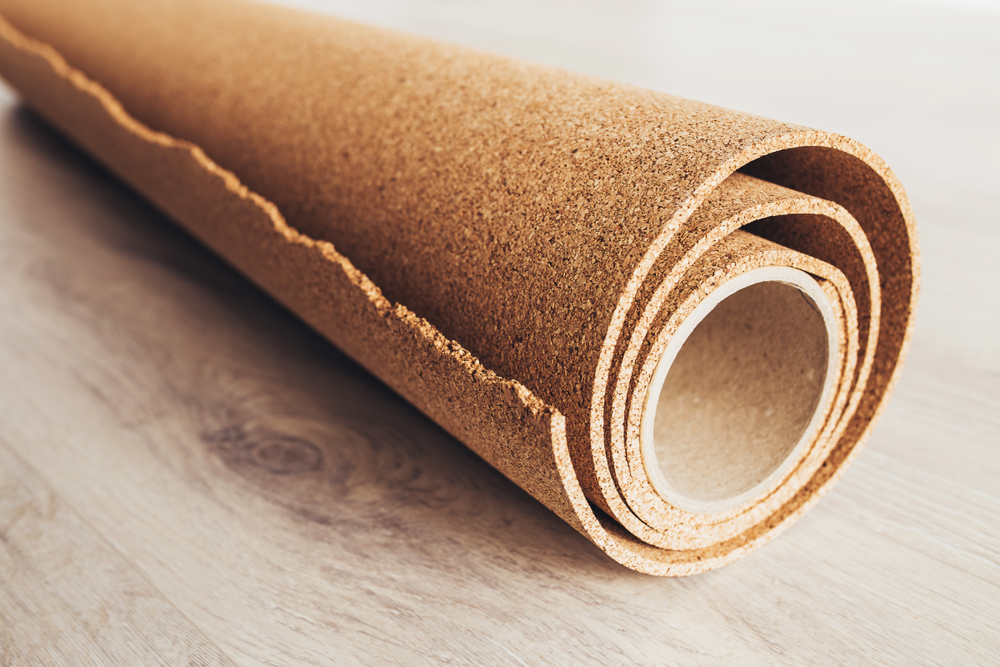
Low VOC Emissions
Volatile organic compounds (VOCs) are harmful chemicals released into the air from certain flooring materials and adhesives. High VOC levels can negatively impact indoor air quality, posing health risks to laboratory personnel and potentially interfering with sensitive experiments.
Selecting low or zero-VOC laboratory flooring options, such as certain types of vinyl and rubber, ensures that the indoor environment remains safe and healthy. This is especially critical in labs where clean air is necessary for research accuracy, or in facilities that prioritize worker well-being.
- Key Consideration: Look for flooring certified with low or zero VOC emissions.
Life Cycle Assessment
Conducting a life cycle assessment (LCA) of flooring materials can help laboratories understand the environmental impact from production to disposal. LCA evaluates factors such as resource consumption, energy use, and waste generation over the flooring’s lifespan.
By choosing laboratory flooring with a lower environmental impact throughout its life cycle—considering not only manufacturing but also installation and disposal—laboratories can make more informed decisions that align with sustainability goals.
- What to Assess: Resource consumption, energy use, and end-of-life disposal options.
Durability and Longevity
Sustainable laboratory flooring choices are not just about the materials used; durability plays a significant role in environmental impact. Flooring that lasts longer reduces the need for frequent replacements, minimizing waste and the resources required for manufacturing new products.
High-performance materials like epoxy and polyurethane, known for their longevity and resilience, contribute to a lower environmental footprint by extending the time between replacements.
- Benefit of Durable Flooring: Reduces waste and resource consumption over time.
Recycling and Disposal Options
Finally, it is essential to consider how flooring materials can be recycled or disposed of at the end of their useful life. Choosing laboratory flooring products that are recyclable or that come with manufacturer take-back programs can significantly reduce landfill waste.
Some laboratory flooring options, such as certain rubber and vinyl products, can be repurposed or recycled, further enhancing their sustainability profile.
- Considerations: Look for manufacturers with recycling programs or products that can be repurposed at end-of-life.
Incorporating environmental and sustainability considerations into the flooring selection process is essential for laboratories striving to reduce their ecological footprint. By choosing eco-friendly materials, prioritizing low VOC emissions, and focusing on durability and recyclability, laboratories can create a safer, healthier, and more sustainable workspace for all.
Conclusion
Choosing the best laboratory flooring involves careful consideration of safety, durability, cost, and environmental sustainability. Each laboratory environment presents unique challenges, whether it be dealing with hazardous chemicals, high foot traffic, or the need for sterile conditions.
By understanding the specific requirements of different industries and weighing the performance of various flooring options against their costs, the expert team of lab designers at Genie Scientific and facility managers can make informed decisions that enhance operational efficiency and safety.
Ultimately, investing in high-quality flooring not only supports a safe and productive laboratory environment but also contributes to long-term cost savings and sustainability goals. With the right flooring in place, laboratories can function optimally while promoting the health and well-being of their personnel.
Are you ready to transform your laboratory with the ideal flooring solution? Explore our extensive range of laboratory flooring options that prioritize safety, durability, and environmental sustainability. Contact us today to consult our experts and discover the best flooring solutions tailored to meet your specific needs. Ensure your laboratory is equipped for success—let’s get started on your project now!



